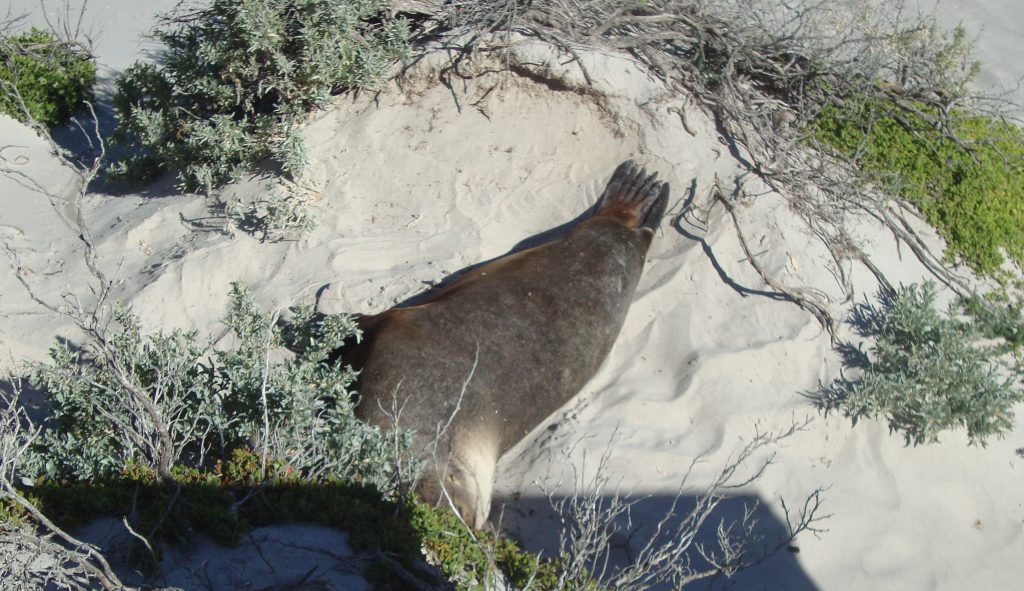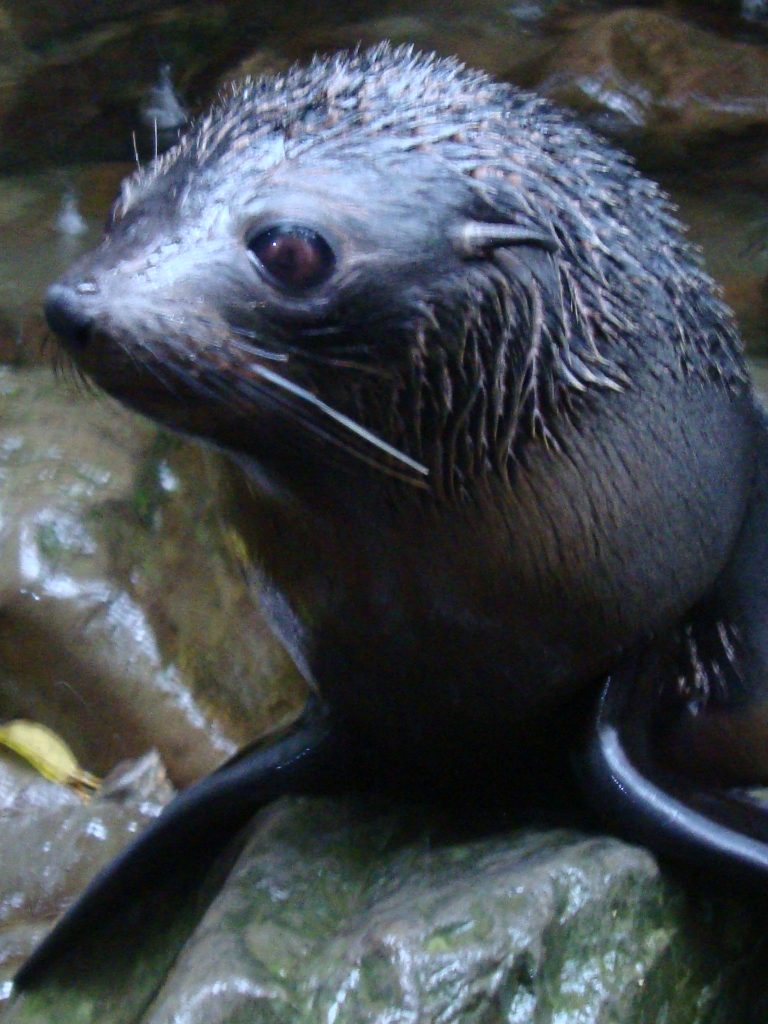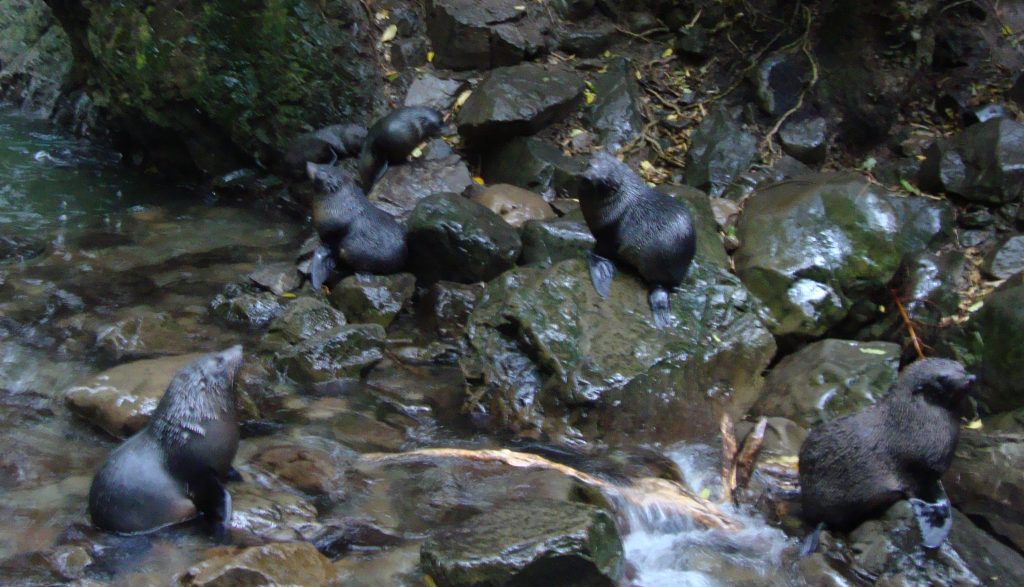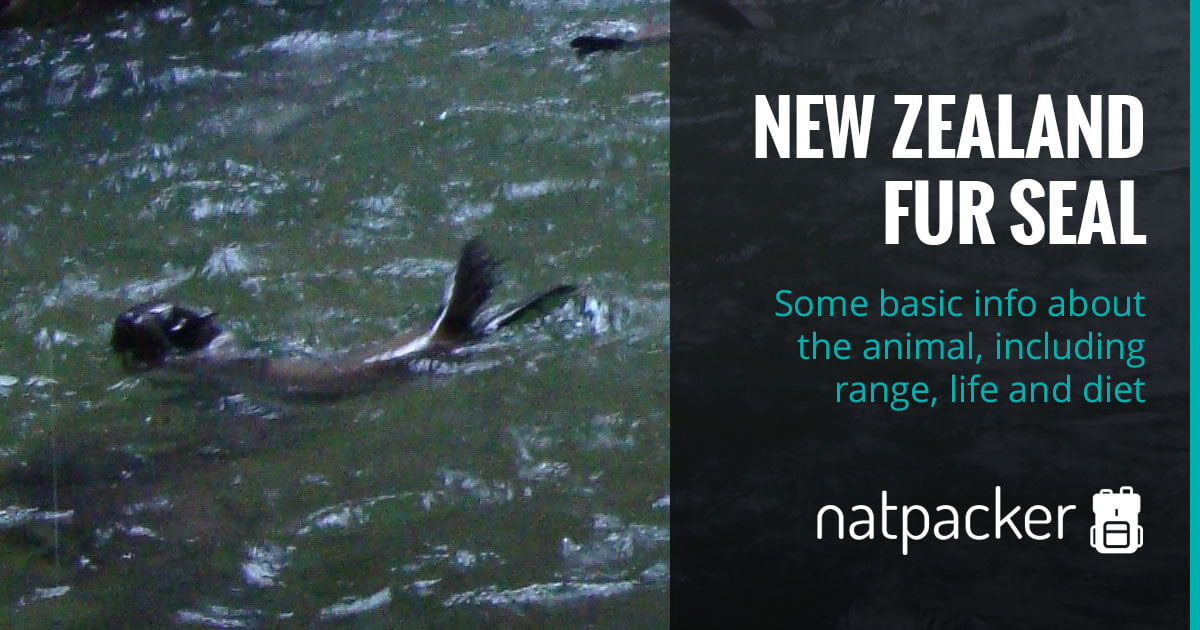The New Zealand fur seal (Arctocephalus forsteri) is a common sight in New Zealand. They are found along the coast of the New Zealand mainland and islands. They can also be found on Southern and Western Australia, as well as Tasmania. Happily the current population is on the rise.
There are many other names for the New Zealand fur seal including southern fur seal and long-nosed fur seal. In Maori the species is known as kekeno.
The species is in the sub-order pinnipedia, which roughly means ‘flippered feet’. They are in the family Ortariidae, which is the family of ‘eared seals’. Ortariidae comes from the Greek word for ‘little ear’. This family includes sea lions and fur seals, which are distinct from true seals.


Fur Seal At Seal Bay
What Makes A Fur Seal?
You can tell a fur seal from a true seal from a number of ways. Mainly it looks more like a sea lion than a true seal (and is more closely related). But there are differences between a fur seal and a sea lion too!
Differences Between True Seals And Eared Seals
Sea lions and fur seals have:
- External ear flaps;
- Hind flippers that have the ability to be rotated forward for quick overland movement.
Differences Between Sea Lions And Fur Seals
Fur seals:
- Are smaller than sea Lions;
- Have a pointier nose.


New Zealand Fur Seal Pup At Ohau Waterfall
The Life Of A New Zealand Fur Seal
New Zealand fur seals are social animals. They spend a lot of their time on rocky shores called rookeries or haul-outs. Time at sea is spent hunting. They return to the same haul-out every year to breed.
Pups
Baby fur seals are called pups. After birth they are suckled for about 300 days in an area called a creche. Some pups will suckle into their second year though! Females will alternate feeding their pup and hunting at sea. They generally stay with their pup for one or two days then return to the sea for one to twenty days. As the pups grow the females stay away from the pups for longer periods of time.
The pups start to eat solid foods just before weaning. They spend their time at the creche playing with other pups and objects such as sea weed. They develop important skills at the creche, such as social skills and hunting behaviours.


Fur Seal Pups At Ohau Waterfall
In the spring juvenile fur seals disperse from the creche.
Maturity
Female fur seals (called cows) reach maturity and start reproducing at 4-6 years old. They will then produce a pup every year until their death.
Male fur seals (called bulls) reach maturity at 5-6 years old. However, they will are generally not socially mature for another 3 years. This means that they will not hold territories or breed during this period.
Breeding
Breeding season lasts from mid November until mid January. Just before this period males will begin dominant displays and fighting other males. Only those that are dominant and hold territories tend to be successful in breeding. New Zealand fur seals are Polygamous, this means that males mate with as many females as he can!
Females give birth and then mate 6-8 days afterward, which can be before their first foraging trip. Females use delayed implantation, this means that the egg is fertilised, but does not implant in the uterine wall. The implantation is delayed for three months. This means that the next pup will be born in the summer months and not whilst she is still caring for her current pup. So although she mates twelve months before giving birth, her pregnancy is only nine months.
New Zealand Fur Seal Facts
New Zealand fur seals:
- Live for 14 – 17 years;
- Can dive for up to 238m and 11 minutes (although this is rare);
- Feed on :
- Cephalopods
- Fish
- Birds;
- Main natural predators are:
- Great white sharks;
- Sevengill sharks;
- Are sexually dimorphic (males and females are different in appearance):
- Males can weigh 90-150 kg and reach 2.5 m in length;
- Females can weigh 30-50 kg and reach 1.5 m in length;
- Are threatened by humans by:
- Trawling;
- Longline fishing;
- Entanglement in marine rubbish;
- Harassment by the public (and tourists).
The History Of Human Impact
When the Maoris arrived in New Zealand, they hunted New Zealand fur seals for food. The arrival of the Europeans caused more deaths for meat and pelts. This brought the specie to the brink of extinction.
In 1978, the New Zealand fur seal become fully protected by the Marine Mammals Protection Act. Since then the general pattern is a population increase. Although there are some colonies that are still in decline.
Want to know more about the New Zealand fur seal? Why not visit:
New Zealand’s Department of Conservation
IUCN Red List
Want to know of where I have encountered these creatures? Why not check out:

